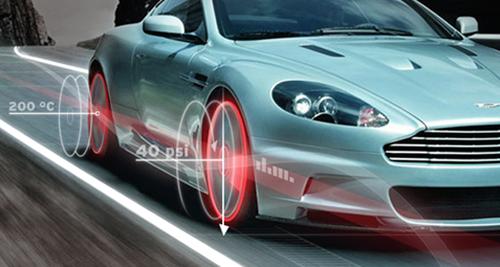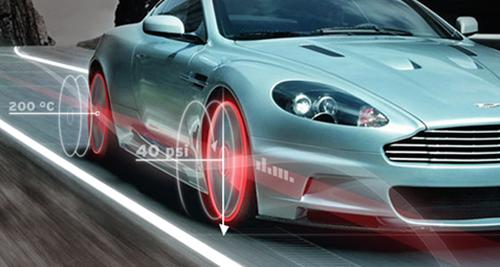3 Ways Tactile Sensing Can Drive Improvements in the Auto Industry
December 16, 2013

Novel sensing technologies are fueling progress in the automotive industry at breakneck speed. And while many new cars boast an array of sensor-enabled flashy features that enhance the user experience, the most critical characteristics remain a car's safety and reliability.
That's where capacitive tactile pressure sensors can make a difference. Here we explore three real-world applications that demonstrate how capacitive tactile sensor technology can accelerate advances in automotive testing and safety.

Brake-pad testing
A well known automaker in Japan wanted to take its brake-pad R&D processes beyond the static testing that was available at the time. To do so, the automaker incorporated capacitive tactile pressure sensors from Pressure Profile Systems (PPS) into its brake pads by slicing them in two and then gluing the sensor between the two halves.
Thanks to this approach, the automaker discovered that the pressure distribution from the application of brakes in a stopped vehicle differs from that resulting from the applications of brakes in a moving vehicle. This surprising difference was attributed to the torque imparted on the calipers by the spinning rotors.
Unlike resistive sensors, capacitive tactile sensors are physically bonded, enabling them to withstand the shear forces at work. With this in mind, the company mounted the sensors on actual cars to be driven around on the streets for further research.
This tactic yielded even more beneficial data, but also gave rise to a new obstacle: The company discovered that the rapid increase in heat that resulted when the calipers were squeezed was distorting the data, as every sensor has some degree of thermal sensitivity. PPS was able to solve this issue by developing a thermal-compensation system centered on thermocouples embedded in the sensors that could account for the thermal disruption in real time.
Tire-tread measurement
As it did for the automaker, capacitive tactile sensing technology came to the rescue of a prominent tire manufacturer that wanted to do dynamic research beyond what it could accomplish with current tools.
The company had a method for testing tires that involved a car that is supported by four pistons, one for each wheel, that go up and down hydraulically to simulate bumps and real-world road conditions. However, the tire manufacturer wanted to incorporate a tire-tread sensor -- a pressure sensor that provides data about the tire tread during the controlled bouncy test -- that could rapidly gather high-resolution data about tire-tread behavior in dynamic environments. Traditional tire-tread sensors, though able to deliver high-resolution images, were too slow and better suited for static applications.
About the Author(s)
You May Also Like



